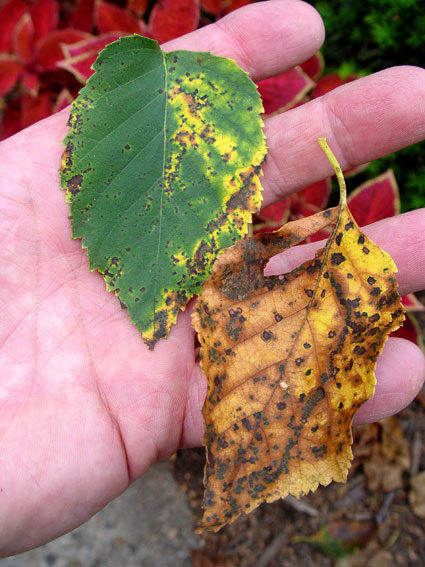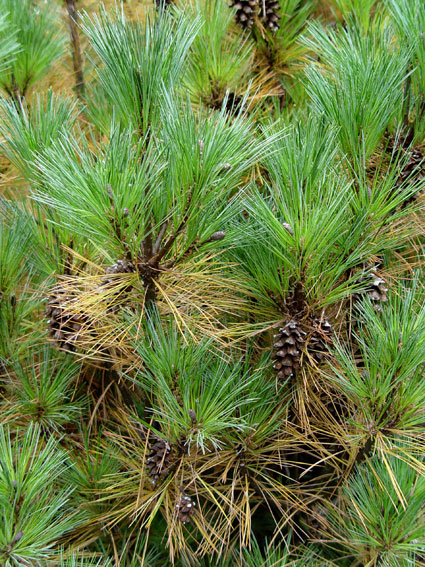Is That New Boxwood Blight Something to Worry About?
Learn more about Boxwood Blight, the disease that has been taking over the popular hedging shrub, and how you can prevent, identify, and stop the disease.

Regular scouting can catch problems such as this leaf-spot disease early, before the whole tree loses its leaves (defoliates). © George Weigel
So much can go wrong in a garden. The tough part for many gardeners is figuring out what’s causing, or nearly causing, a plant to fail. Because plants can’t point to where it hurts, you’ll need to diagnose differently: Instead of playing doctor, play detective.
In order to know something’s out of the ordinary, gardeners should first know what’s normal for their “victim” plants. Bark peeling off a birch tree is normal. And white pines are prone to dropping many yellowed needles each fall, while larches are genetically programmed to drop all of their needles every fall.
When you’re sure there’s a problem, start digging. Many times, the answer to what ails plants only becomes apparent as a process of elimination. Start by collecting evidence. Small brown pellets on the ground next to a nibbled pansy could indicate an animal problem. Deformed or discolored leaves might conceal dot-sized black fungal spores on their undersides. A glossy film on those holly leaves might be the aftermath of a scale insect attack.
What seems like nuance could be the solution to the puzzle, so attention to detail is key. Symptoms could point to different, or even opposite, causes. A plant slowly yellowing from bottom up could mean it’s suffering from disease; a plant that’s browned just on one side may have been hit by herbicide drift or salt spray. Wilting can happen because a new plant hasn’t been watered for three weeks, or because the roots have rotted from excess water.

Know your plants so you can tell what’s normal and what’s not. These yellowing pine needles in fall are normal. © George Weigel
Routine scouting and observation is the best way to catch a problem early. Take regular walks to enjoy your plants, but while you’re gawking and sniffing, watch for early signs and symptoms that something’s amiss – leaves yellowing or losing their green, little white flecks on evergreen needles, or noticeable thinning of a tree’s canopy. You might not know what’s causing the plant trouble yet, but realizing there’s trouble is where a plant P.I. starts the investigation. County Extension offices, garden centers, and a host of university and botanical garden Web sites make reliable “witnesses” when trying to catch a garden crook red-handed.
A few common plant problems with some possible causes: